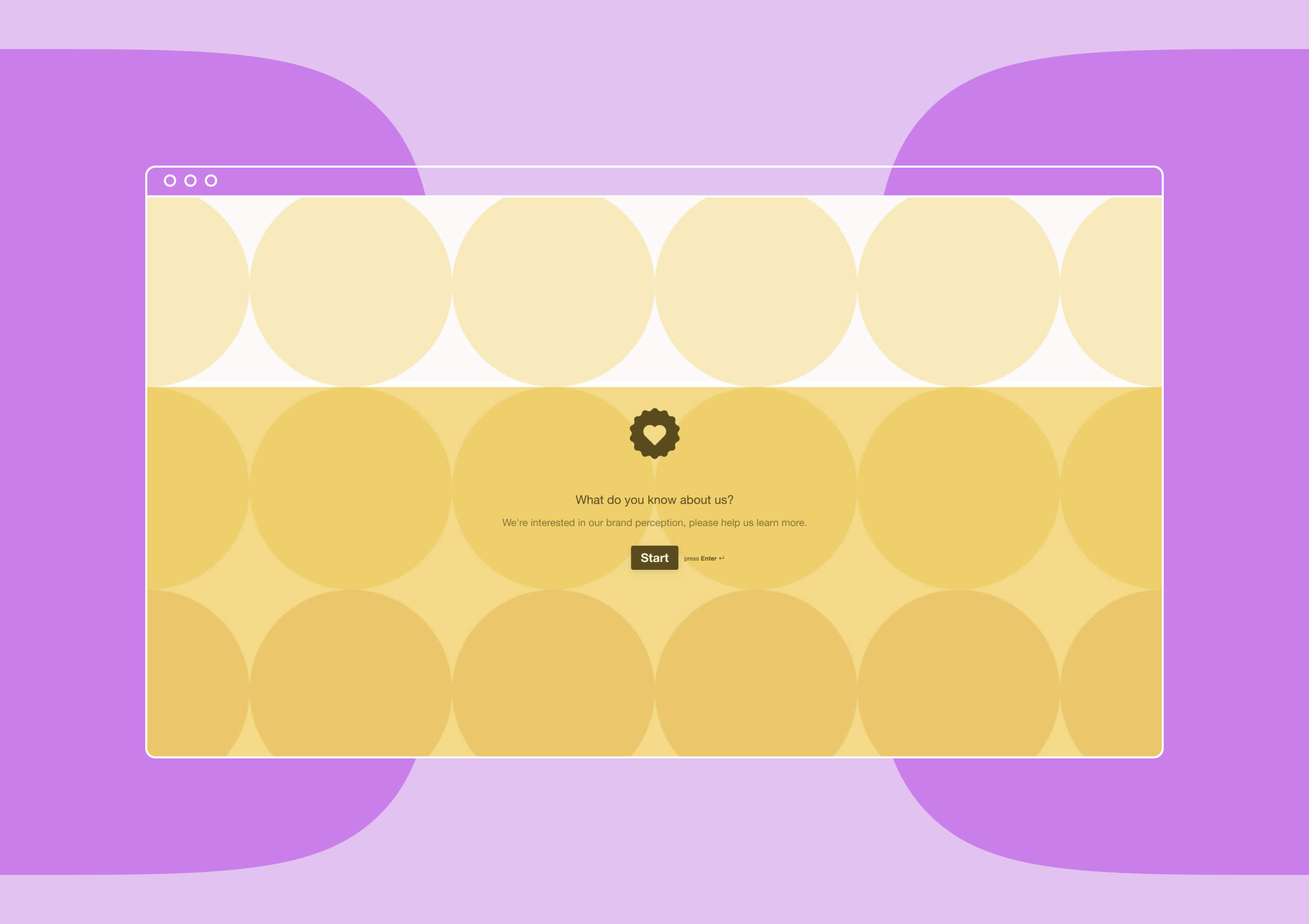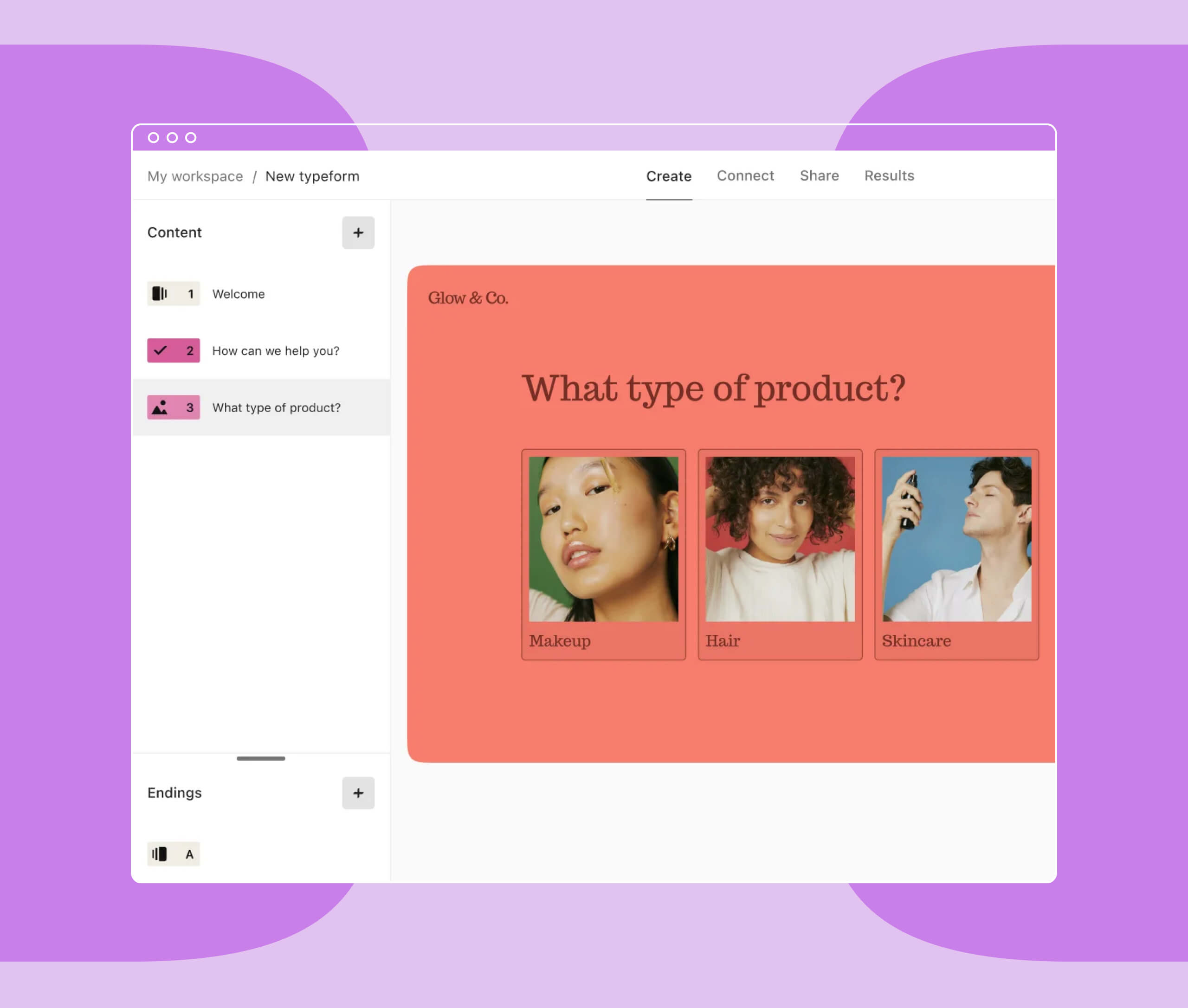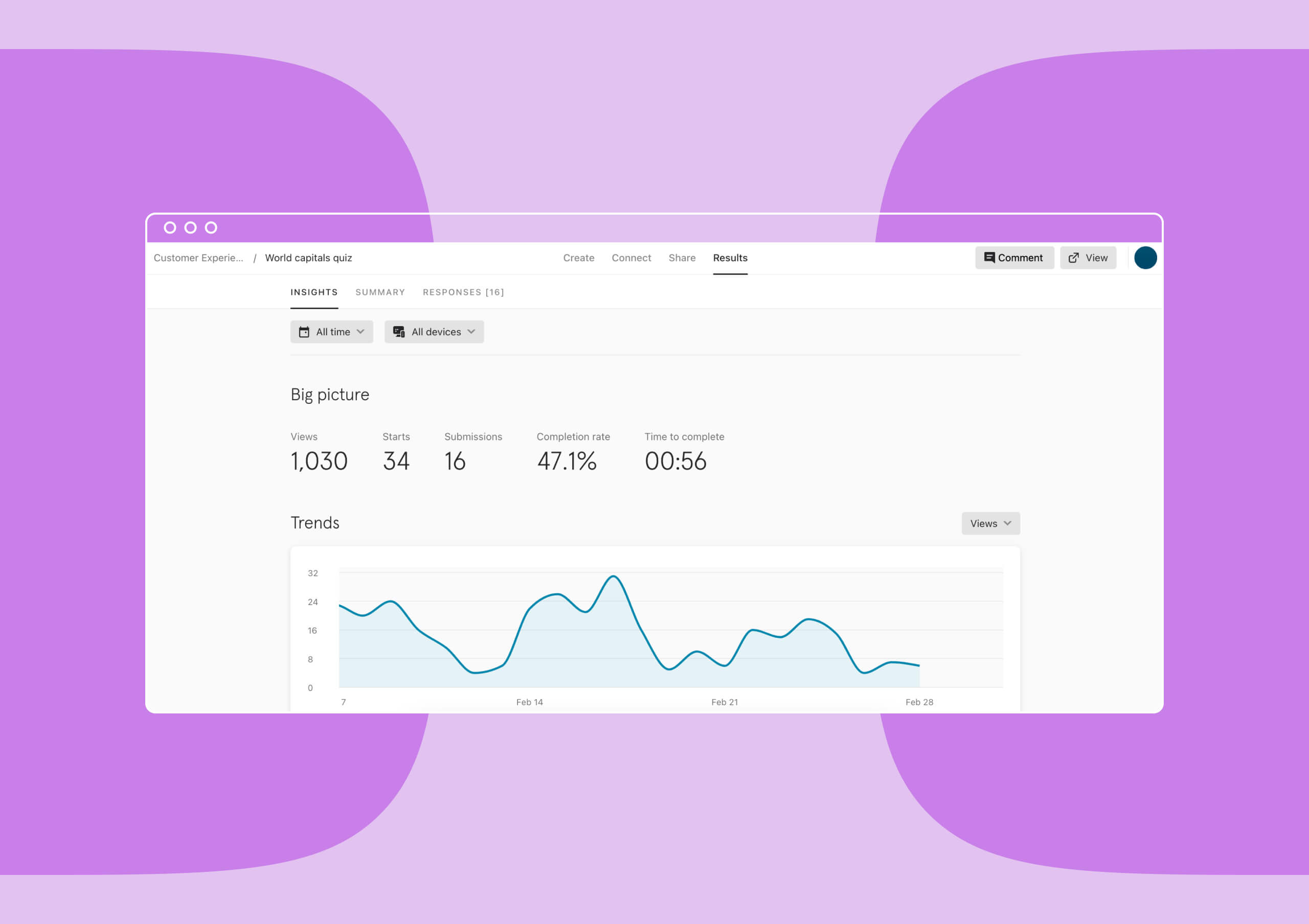Our view at Stack - Typeform is our go-to software if we need to ask a set of structured questions of a group of customers, prospects or leads. In summary, Typeform combines aesthetics, functionality, and flexibility. User-friendly form builder with interactive design, versatile question types, real-time data collection, 500+ integrations, and diverse templates. Ideal for engaging surveys and lead generation.

Building effective online forms isn’t just about collecting data––it’s about creating an experience. Typeform and Zoho are two solid contenders. These leading form builders look similar on the surface but cater to different audiences.
This article will help you navigate the key differences between Typeform vs. Zoho, including design, data analysis, features, integrations, and support so you can choose the form builder that best meets your needs.
Typeform vs. Zoho comparison
When it comes to Typeform vs. Zoho, both platforms help you build forms and gather data, whether it’s for customer feedback or market research. While they may appear similar, their focus areas are different. Typeform prioritizes user experience with a focus on beautiful design and a conversational flow, aiming to keep respondents engaged. Zoho, on the other hand, focuses more on simplicity.
The battle goes beyond aesthetics. Typeform empowers you to delve deeper into survey data, unlocking valuable insights with its user-friendly interface. This lets you customize layouts and create forms that perfectly embody your brand identity.
While Zoho offers similar functionalities, it has limitations in data analysis, embedding capabilities, and integration options compared to Typeform.
Unsure which form builder to choose? Don’t worry! We’ll explore their specific features and capabilities to help you make an informed decision.
| Typeform | Zoho | |
|---|---|---|
| Design | ||
| Image layout customization | ✔ | ✔ |
| Designable and customizable welcome screen and thank you pages | ✔ | ✔ |
| Mobile responsiveness | ✔ | ✔ |
| Integrated professional photo, video, and icon libraries | ✔ | X |
| Add icons from Noun Project, videos from Pexels, photos from Unsplash | ✔ | X |
| Features | ||
| Custom subdomains | ✔ | ✔ |
| Embed form in email | ✔ | ✔ |
| PCI-compliant forms (payments) | ✔ | ✔ |
| HIPAA compliant | ✔ | ✔ |
| GDPR compliant | ✔ | ✔ |
| WCAG 2.1 compliant | ✔ | ✔ |
| Ability to sync data with other forms | ✔ | ✔ |
| Data Analysis | ||
| Question-by-question drop-off analysis | ✔ | X |
| API and webhooks | ✔ | ✔ |
| One question at a time | ✔ | X |
| Ability to generate a report on surveys/forms | ✔ | ✔ |
| Calculator | ✔ | ✔ |
| Conditional logic | ✔ | ✔ |
| Campaign tracking/UTM tracking | ✔ | ✔ |
Build polished and immersive forms

Building forms is about capturing attention and creating a positive user experience––that’s how you maximize engagement and data collection. Typeform shines with its user-friendly design and a commitment to fostering a smooth, immersive form-taking experience.
Unlike some competitors with complex interfaces or code-heavy approaches, Typeform empowers anyone to become a form-building pro. Our intuitive interface lets you effortlessly arrange question elements, customize layouts, and watch your vision come to life. Think of it like creating with digital building blocks but with no design expertise required!
But Typeform doesn’t stop at ease of use. We also offer over 3,000 templates tailored to your unique goals. Our template gallery caters to an array of niches––from gathering feedback to gauging customer satisfaction to generating leads, the options are limitless.
The result? Creating polished and visually appealing forms in minutes allows you to focus on what matters most: collecting valuable data and interacting with your users.
While Zoho offers basic form-building tools, they fall short compared to Typeform’s breadth of design customization and access to real-time analytics.
Diverse and dynamic form-building features

Both Typeform and Zoho offer the essentials: building, editing, and customizing forms to fit your needs. But for crafting a smooth and engaging user experience, Typeform takes center stage.
Typeform prioritizes core functionalities for a seamless experience for form takers. This includes custom subdomains and data synchronization across forms to streamline data management.
Typeform allows you to personalize the user journey through conditional logic. Imagine forms that adapt questions based on previous answers, creating a natural conversation flow and keeping users engaged.
Both Typeform and Zoho allow you to seamlessly embed forms directly within emails. This eliminates the need for users to navigate to a separate page, potentially increasing your response rates.
Typeform and Zoho also prioritize data security. They offer compliance with PCI, HIPAA, GDPR, and WCAG 2.1 standards, ensuring the protection of sensitive information collected through your forms.
Uncover data insights with ease

Collecting data is just the beginning of building forms. The true power lies in understanding that data to make informed decisions.
Typeform does just that. Campaign and UTM tracking lets you pinpoint where form takers originate, giving valuable insights into your marketing efforts.
Typeform provides real-time question-by-question drop-off analysis, unlike Zoho. This lets you pinpoint problem areas as responses come in so you can fine-tune your form immediately.
With one question at a time, Typeform’s conversational design keeps users engaged. This format, combined with conditional logic, allows for personalized user experiences. The cherry on top? 96% of customers agree that Typeform improves their brand experience.*
Zoho offers conditional logic but is less robust. Typeform allows for complex conditional branching with nested conditions and multi-step logic. This means you can create intricate question paths that adapt dynamically based on user responses, gathering highly nuanced data that would be difficult to achieve with Zoho.
While Zoho offers similar functionalities, Typeform’s readily available data within the platform allows for faster analysis and practical insights to optimize your forms and marketing efforts.
Boost productivity with powerful integrations

When deciding between Typeform vs. Zoho, make sure you choose the form builder that integrates with your current workflow. Typeform offers over 120 integrations that sync with your existing accounts to Dropbox, Google Sheets, and even Zapier.
While Zoho offers some integrations, it’s missing popular ones, including:
-
Mailchimp
-
Slack
-
Zoom
-
DocuSign
-
Adobe Sign
-
Dropbox
-
Canva
-
Notion
-
monday.com
-
Google Tag Manager
-
Figma
-
Klaviyo
-
Zendesk
Supercharge your data collection with our vast library of integrations. Connect to CRMs, marketing tools, and more for a seamless workflow—in fact, 92% of users agree that Typeform makes form building easier.*
| Typeform | Zoho | |
|---|---|---|
| Google Sheets | ✔ | ✔ |
| Mailchimp | ✔ | X |
| Zapier | ✔ | ✔ |
| Slack | ✔ | X |
| Salesforce | ✔ | ✔ |
| Hubspot | ✔ | X |
| Zoom | ✔ | X |
| DocuSign | ✔ | X |
| Adobe Sign | ✔ | X |
| Dropbox | ✔ | X |
| Canva | ✔ | X |
| Notion | ✔ | X |
| monday.com | ✔ | X |
| Google Tag Manager | ✔ | X |
| Figma | ✔ | X |
| Zendesk | ✔ | X |
| Klaviyo | ✔ | X |
| WordPress | ✔ | ✔ |
Stuck on a form question? Typeform offers comprehensive support to keep you up and running. Our help center offers clear and thorough guides to get you started. Paid plans provide 24/7 access to our live support team, ensuring you receive prompt assistance when needed. Lean on the active community forum to connect with other users, ask questions, share solutions, and learn from others’ experiences.
When comparing Typeform vs. Zoho, prioritize ease of use, extensive design options, and reliable support. With Typeform, you can maximize survey response rates, gather valuable data, and create beautiful forms that captivate your audience. Start your free Typeform trial today.
If Typeform is of interest and you'd like more information, please do make contact or take a look in more detail here.
Credit: Original article published here.
